Asymmetrical eyes, uneven eyes, or one eye lower than the other are common situations among people of Asian descent. There is a certain anatomic variation that is specific to Asian descent and it has to do with the absence of a crease or the presence of a crease. And it is due to an attachment between the muscle that lifts the eyelid called the levator muscle.
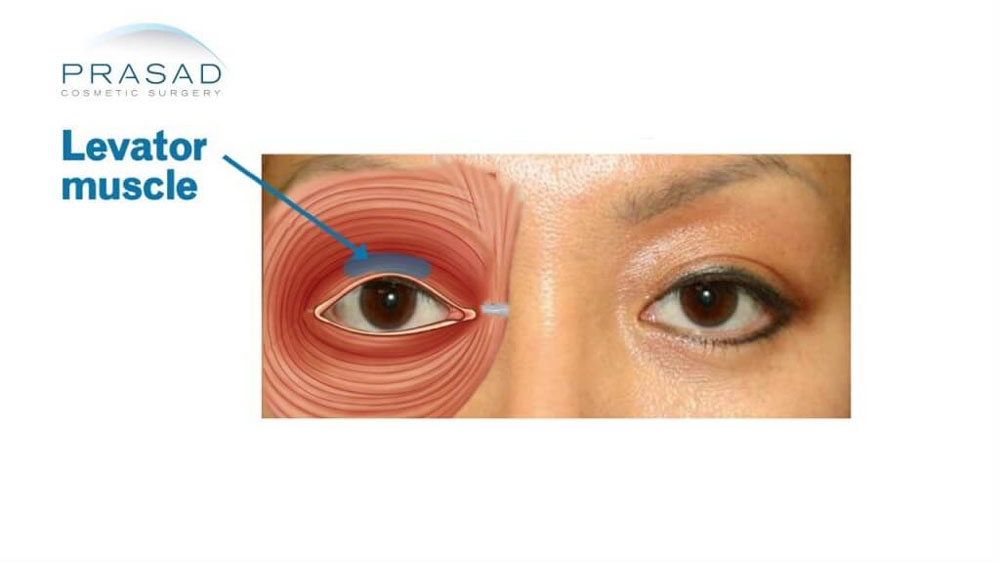
In front of the levator muscle are fibers that attach to the skin. When they’re attached very firmly, you get a crease; when they’re not attached firmly, there’s no crease, or a shallow crease, and the skin folds over.
Uneven Eyelids
When the eyelid skin folds over, it creates the perception of the eye being smaller. Essentially, it is the fold that is defining the shape of the eye, so generally, a relatively straightforward issue. The key to this is to try to create that connection between the eyelid skin and the levator muscle which is the entire basis of Asian double eyelid surgery.
Asian Eyelid Surgery
Asian eyelid surgery has two types of procedures: non-incisional surgery, and incisional surgery. A non-incisional procedure is basically defined as making small openings in the skin and attaching the skin to the muscle underlying the levator muscle and creating that fold.
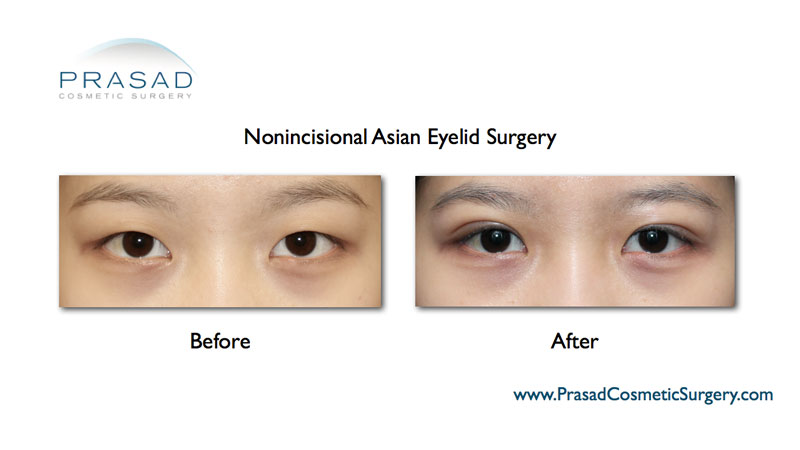
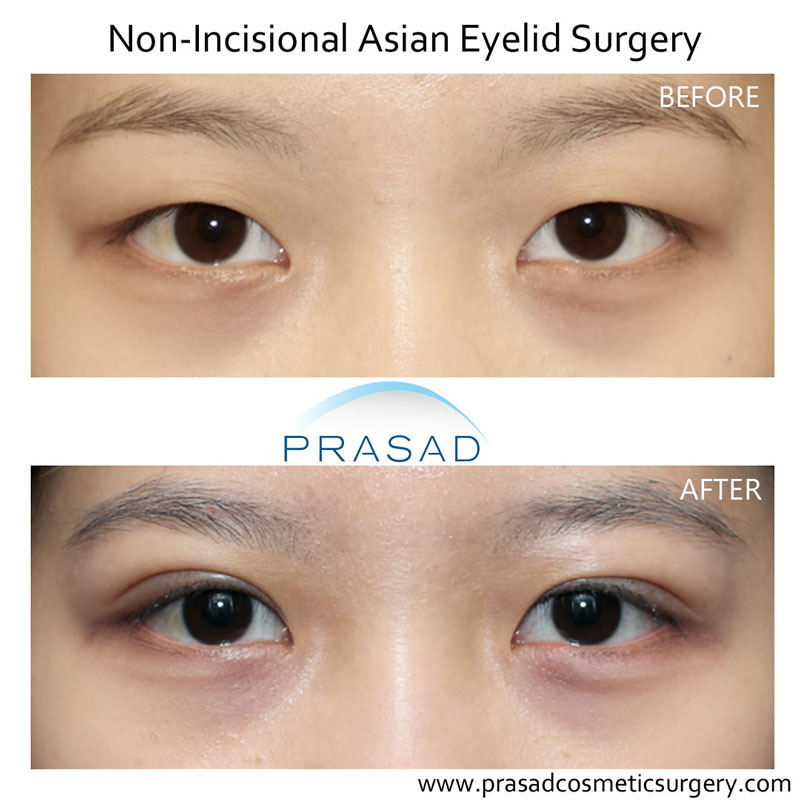
In an incisional procedure, Dr. Prasad would either remove some skin, and address a certain amount of fat in order to create the crease and fold.
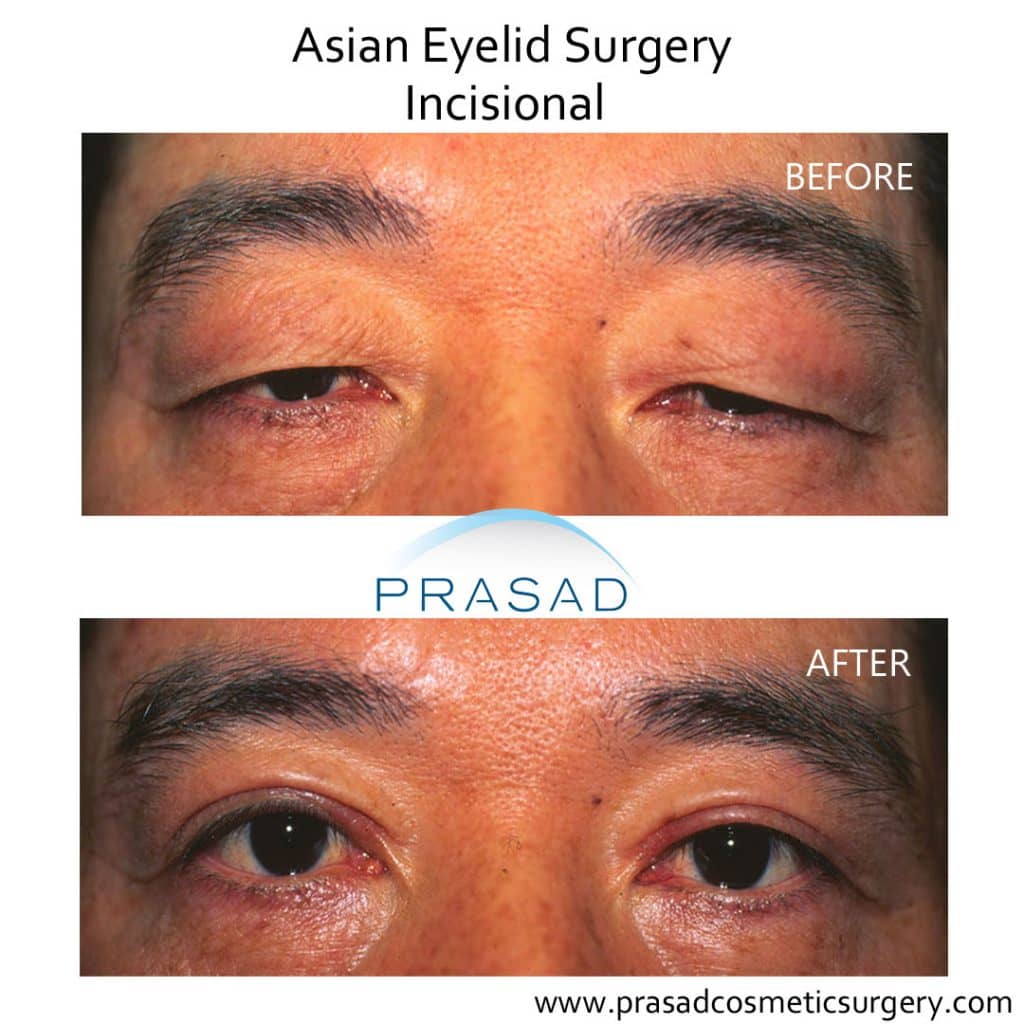
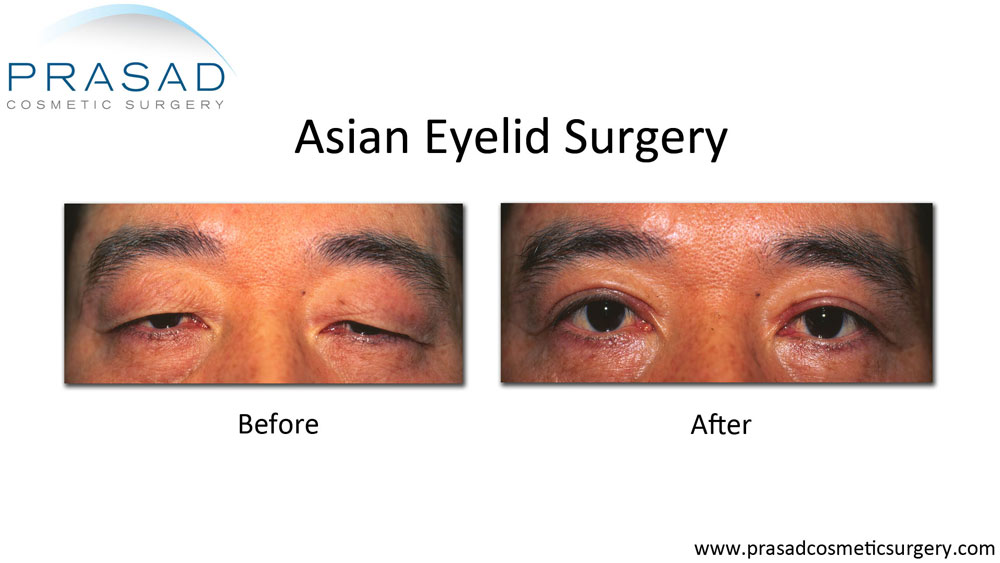
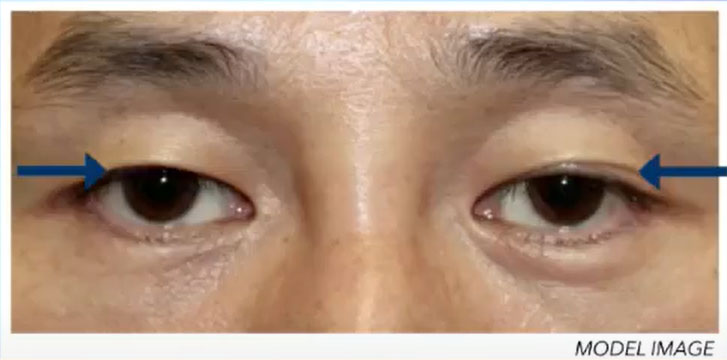
At Prasad Cosmetic Surgery, Dr. Prasad routinely uses a Q-tip or instrument to simulate a crease and push the skin in a way that mimics what would happen if he were to attach the skin to the muscle with the surgery. Basically, you can then see what the crease would look like before surgery.
Asian eyelid surgery is a cosmetic procedure that Dr. Amiya Prasad does under local anesthesia with LITE™ IV sedation. When it’s done with local anesthesia, it’s just a matter of allowing the time for the skin to heal over the course of several weeks, but most patients can get back to work in about a week after the procedure.
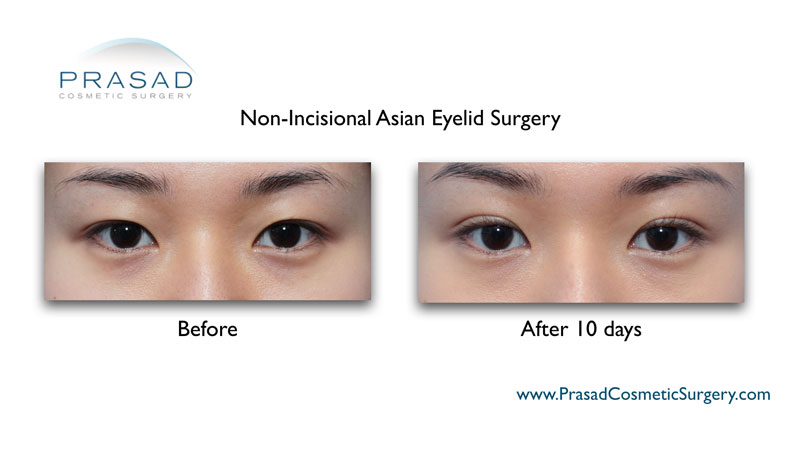
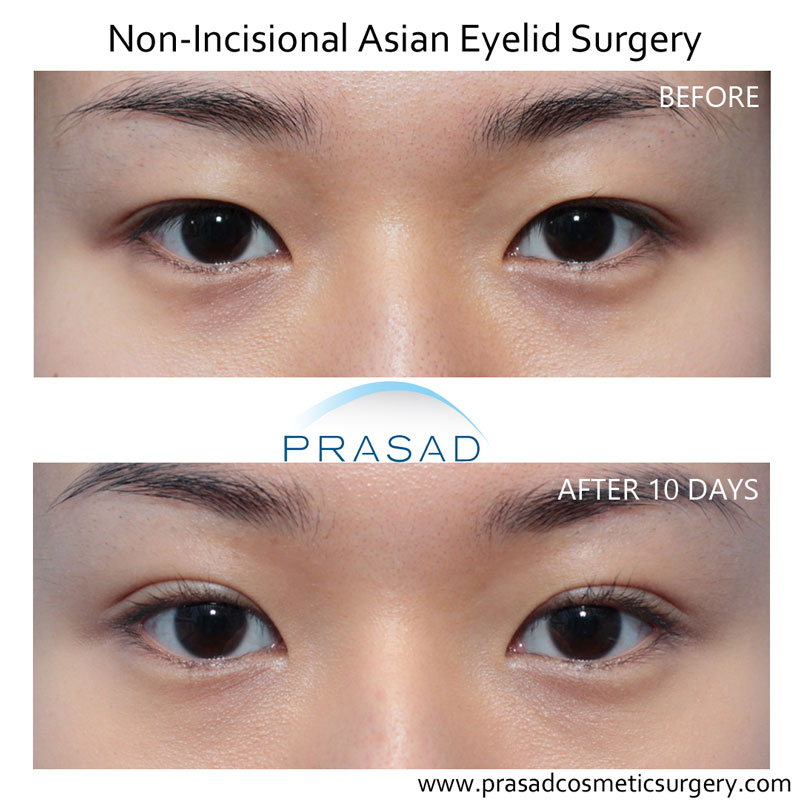
As far as swelling, with upper eyelid surgery the area between the crease and the eyelid margin, is an area where swelling can linger for several months, but does progressively get better. There is usually a little less swelling with non-incisional compared to incisional eyelid surgery.
Related: Should I Get Double Eyelid Surgery?
How to Fix One Eye Smaller than the Other (Asian Uneven Eyelids)
Asian Eyelid Surgery New York
Dr. Amiya Prasad is a Board-certified cosmetic surgeon and Fellowship-trained oculofacial plastic and reconstructive surgeon. He has been in practice in Manhattan, NYC and Long Island for over 25 years. Helping people with their eyelids especially when it comes to more advanced eyelid procedures such as Asian eyelid surgery has been a very big part of his practice. Follow the link to view double eyelid surgery before and after gallery.
